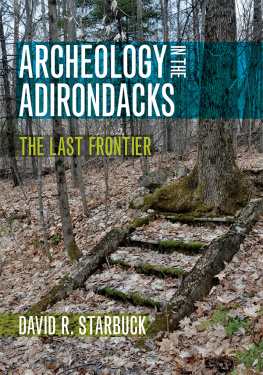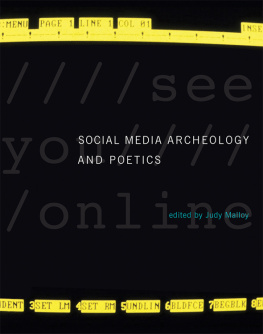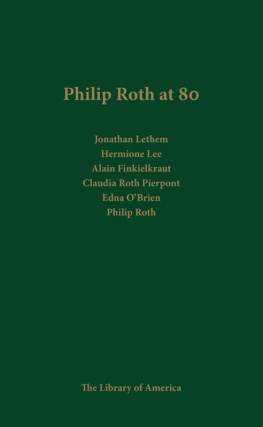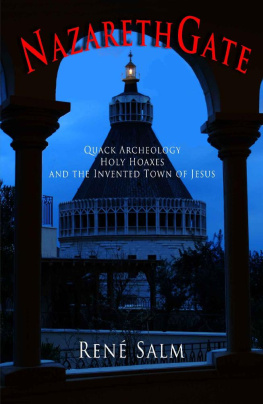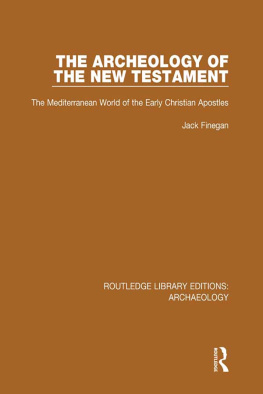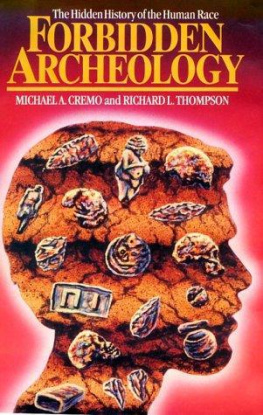J. C. Philip - Dating Methods In Archeology
Here you can read online J. C. Philip - Dating Methods In Archeology full text of the book (entire story) in english for free. Download pdf and epub, get meaning, cover and reviews about this ebook. year: 2013, publisher: Philip Communications, genre: Romance novel. Description of the work, (preface) as well as reviews are available. Best literature library LitArk.com created for fans of good reading and offers a wide selection of genres:
Romance novel
Science fiction
Adventure
Detective
Science
History
Home and family
Prose
Art
Politics
Computer
Non-fiction
Religion
Business
Children
Humor
Choose a favorite category and find really read worthwhile books. Enjoy immersion in the world of imagination, feel the emotions of the characters or learn something new for yourself, make an fascinating discovery.

- Book:Dating Methods In Archeology
- Author:
- Publisher:Philip Communications
- Genre:
- Year:2013
- Rating:4 / 5
- Favourites:Add to favourites
- Your mark:
- 80
- 1
- 2
- 3
- 4
- 5
Dating Methods In Archeology: summary, description and annotation
We offer to read an annotation, description, summary or preface (depends on what the author of the book "Dating Methods In Archeology" wrote himself). If you haven't found the necessary information about the book — write in the comments, we will try to find it.
Dating Methods In Archeology — read online for free the complete book (whole text) full work
Below is the text of the book, divided by pages. System saving the place of the last page read, allows you to conveniently read the book "Dating Methods In Archeology" online for free, without having to search again every time where you left off. Put a bookmark, and you can go to the page where you finished reading at any time.
Font size:
Interval:
Bookmark:
Biblical Archeology, Volume 2
Dating Techniques in Archeology: An Intro
Dr. Johnson C. Philip
Dr. Saneesh Cherian
Editor: JW Thompson

th Revised Edition, 2013
Contents
In the first volume we discussed the importance and the benefits of archeology for Bible Students. One of the important activities in archeology is age-determination .
An artifact, an inscription, or a mummy can be placed in historical context and interpreted only if one can speak with some certainty about what period it belongs to. The closer an object is to an event, the better one can interpret the event or the object, and the farther it is the less its relation to the given event. A cult object found from the home-town of Abraham, but used only two millennia after the time of the Patriarch, would throw less specific light on his life and more on the culture millennia after him.
Finding the collapsed walls of ancient Jericho is exciting. But this discovery is useless for Biblical archeology unless it can be demonstrated that this even happened within the dates specified by the Biblical historian. If someone can definitely establish that the discovered event happened 500 years before or after the dates demanded by the Bible, it automatically becomes useless for a possible correlation with the conquest mentioned in the Bible.
Thus attempts to develop methods to ascertain dates of artifacts and events have always been there right from the beginning of Archeology. Initially it was sufficient to know the country of origin and the general era, but as archeology was increasingly used to reconstruct ancient history with a measure of certainty, more accurate dates became important. But since most of the earlier archeological investigations were not done systematically, this immediately posed a problem.
Initial Problems Faced In Dating : Since the initial excavations [for almost a century] were done haphazardly, the work of the archeologists was often no different from the grave-robbers. One robbed it, while the other plundered it, but both of them did it for personal gains. Thus most archeological diggings were unplanned and random, without any substantial record-keeping, and the eyes were fixed only on "major" artifacts. Things considered minor such as pot-shreds and pieces of bones and food were simply thrown away. Much evidence that could lead to reliable dating [especially with the help of Radiocarbon Dating] were lost for ever.
Further, since the artifacts were seen more as collectibles rather than objects of historical study, and since in those days the finders were keepers, the items discovered were simply divided among the collaborators. Some ended in their personal collection, while others were sold to status-conscious people in Europe and America, and some were even presented to rulers of various countries as souvenirs. This immediately destroyed the context in which these artifacts were found, destroying the opportunity to correlate them in any objective way, for if one of them could be dated in the place of discovery with certainty, the others could also be dated. Such an opportunity is lost for a large number of precious finds.
Worse, though many of the items now rest in museums where people [or researchers] can have access to them, a large number of the more attractive and precious artifacts have found their way into private collections of antique collectors worldwide. Most of them zealously guard their treasures, and do not give access to these for any purpose. Often when some of these people pass away, everything falls into the hands of their heirs who might have no appreciation for their historical value. Faced with the need to raise funds for their pet projects, or even to finance their vices, they often sell these in the antique black market. Others simply dump them in their attics, remaining lost for long time, or are even destroyed by people who have no idea of their historical value.
A good example what might happen to ancient artifacts in private possession is the story of what is popularly called Jenkins Venus. An ancient statue of goddess Venus, it was considered so precious by the original buyer that he had an entire Roman style building specially commissioned to house the statue. But his heirs did not have money to maintain it all, and sol d it in auction at close to eight million pounds [approximately 15 million US Dollars].
Once some order came into archeological excavations, and once people started to reconstruct ancient history of places from where such finds came, the importance of dating them in situ grew upon them. It is only then that methods of dating began to be developed. However, this happened so late that even today a large number of finds available for public research still await more precise dating.
Archeology is a science that has its origin in grave-robbers, antique hunters, status conscious collectors, gold-seekers, and the quacks who used ground-up mummies as cure for a number of diseases. Thus an attempt at dating was not usually done even by those who collected ancient artifacts for more serious purposes. However, with the development of interest in the history of ancient civilizations, there were some attempts to date finds in a more precise manner. This was, however, hindered by the random manner in which most of the earlier "academically oriented" excavations were conducted.

Flinders Petrie
Serious development of dating took place for the first time in 1890 when Flinders Petrie started work at Tell el Hesi. He drew attention of excavators to the fact that most mounds in the middle east were not a single ruined town, but rather a series of ruined towns one on top of the other, with the oldest one at the bottom and the most recent one at the top. Maybe the last town on top was ruined because it was abandoned, but almost all the previous ones were ruined after the town was defeated by enemy forces. And most invaders had the habit of rebuilding over the ruins of the conquered town, after they raged most of it to a suitable level. Nothing was thrown away, and everything from the defeated town became part of the filling.

Tell el- Hesi
Thus if a vertical shaft is dug carefully, one would see several distinct layers one below the other till one reached the virgin soil or bedrock. This became obvious at Tell el Hesi where a wadi [deep cut formed by erosion of mud and brick] exposed an entire vertical section of the mound, and several distinct layers were visible. Petrie measured the relative height of the layers from mean sea level, and created a chronology which was then applied to other places close by.

Example of Multiple Layers
FJ Bliss, who followed Petrie to work at this site reinvestigated, and established that the method gave some good results. In 1894 he combined the results of his work with that of Petrie, and established a rough chronology as far back as 1500 BC. However, soon it became obvious that this method is good only for a limited area because the scale established in one region might not have any correlation with the strata in mounds far removed from the first ones. Further, the method fell short of the goal in dating layers in those mounds where the layers overlapped, where they were not sufficiently horizontal, or where some layers were missing [because there was simply no human habitation there for several hundred years]. In spite of this weakness this method brought in quite some order in the chaotic chronology of the Tells investigated, but the need for a more accurate and objective chronology soon became obvious. The next important development was Pottery-based-dating.
Next pageFont size:
Interval:
Bookmark:
Similar books «Dating Methods In Archeology»
Look at similar books to Dating Methods In Archeology. We have selected literature similar in name and meaning in the hope of providing readers with more options to find new, interesting, not yet read works.
Discussion, reviews of the book Dating Methods In Archeology and just readers' own opinions. Leave your comments, write what you think about the work, its meaning or the main characters. Specify what exactly you liked and what you didn't like, and why you think so.

